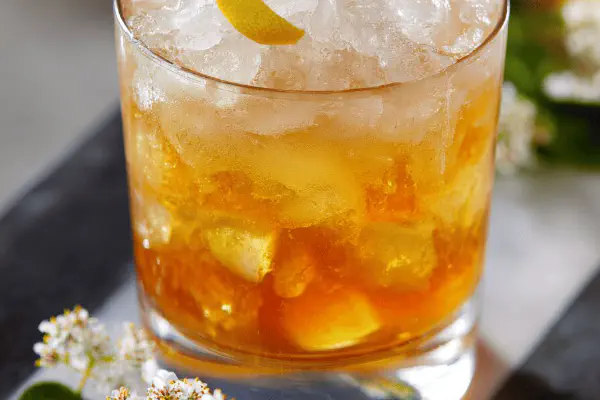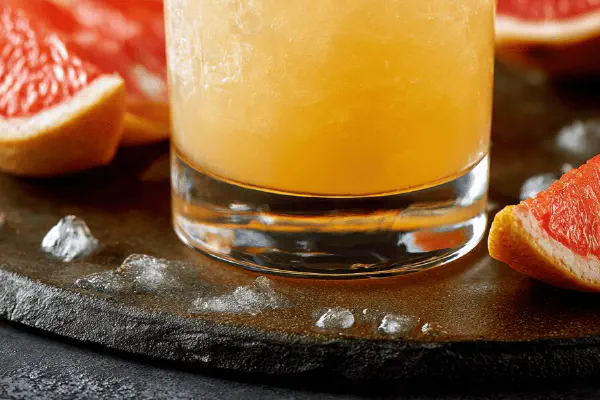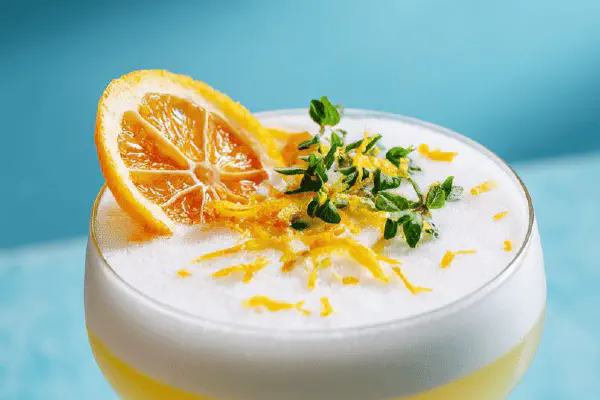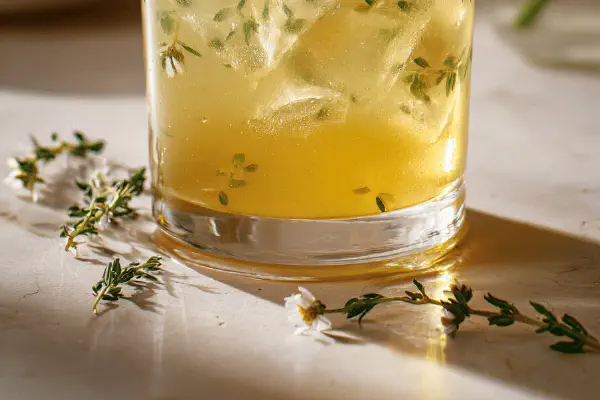Ice Cider Elderflower Fizz

By Emma
Certified Culinary Professional
Ingredients
- 30 ml ice cider or sweet Riesling
- 60 ml sparkling elderflower soda or club soda with elderflower syrup
- Crushed ice filling glass three-quarters full
- 1 small lemon twist; optional
About the ingredients
Method
- Start by filling a large wine glass just over halfway with crushed ice — fresh from the freezer is best; gives that slow melt effect I like
- Pour the 30 ml of ice cider smoothly over the ice; it should hiss a little, that tiny fizz means fresh
- Add 60 ml sparkling elderflower soda steadily; listen to the pop, gentle bubbles rising like soft whispers
- Stir very lightly with a bar spoon – slow circular motion, avoid breaking bubbles, want to keep the effervescence
- Garnish with lemon twist held over glass so oils scatter, drop it in or hang on rim
- Serve right away; delayed drink loses sparkle and texture, no good
Cooking tips
Chef's notes
- 💡 Use crushed ice, not cubes. Bigger blocks melt slow but dilute faster in thin drinks. Crushed breaks slower, stays cold, keeps bubbles intact longer; always keep ice dry until use. Frozen ice cider or soda helps keep chill longer; warm glass kills sparkle fast. When stirring, go slow circular. Flick wrists, don’t whip. Bubbles delicate. Less air in mix keeps fizz alive and fresh aromas floating.
- 💡 Sub elderflower soda with plain club or sparkling water plus elderflower syrup if needed. Syrup sweetness varies — add sparingly. Syrup temp matters; cold dissolves slower — stir gently to avoid foam. For iced Riesling, why not? Sweetness and acidity change drink texture. Not ice cider? Late harvest white also works but heaviness eats bubbles. Play with ratios to keep floral notes bright but not syrupy or flat.
- 💡 Lemon twist oils crucial. Avoid white pith bitterness; peel thin with peeler or microplane zest. Hold peel over glass, twist hard enough for oils to spray on surface; drop in or hang on rim for aroma. These oils cut sweetness almost immediately; no extra garnish needed. Adding lemon at end keeps cold and scent fresh; put too soon and oils dissipate or juice ruins balance.
- 💡 Watch ice condition. Slushy, chipped, or melting ice kills fizz and cool down. Always dump old ice. Clear ice preferred. Cloudy, soft ice melts too fast, waters down flavor. Pre-chilling mixing glass or wine glass helps; warm glass sucks sparkle. Metal glasses slam cold but change perception — choice depends on feel you want. Timing from pouring to drinking matters: bubbles start soft crackle, end with quiet fizz on tongue.
- 💡 Stirring not shaking, no exceptions. Shakes break bubbles instantly and lose soft whisper pop sound. Gentle motion with bar spoon, slow circle about 5 seconds or less. Stop before bubbles turn foam. Bubbles mean freshness. Bubble loss equals dull taste. Pour liquids over ice smoothly. Sudden splash breaks bubbles, sounds kill charm. Serving fast holds texture and mouthfeel. Delays mean watery, dull mouth and flat scent.
Common questions
Can I swap ice cider?
Use late harvest Riesling or sweet white. Different acid and sugar levels. Weight shifts, can lose bright zing but still work. Elderflower syrup helps balance sweetness. Keep chilled to keep fizz.
What if no elderflower soda?
Use sparkling water plus elderflower syrup; control sweetness better. Syrup too much ruins bubbles. Alternatives? Dry sparkling white also okay but flavor lighter. Play with quantities to avoid drowning cider flavor.
Why does my drink get watery fast?
Ice melts too quick. Use crushed ice, clear ice if possible. Dump slushy ice before pouring. Glass temp too warm. Stir gently only, no shaking. Serve immediately after preparation. Smaller serves if needed to maintain taste integrity.
How to store leftovers?
Not recommended. Bubbles vanish fast; if kept, store covered fridge chilled, no stirring. Use soon or lose fizz and aroma. Could pour over fresh ice again but dilute more. Better to make fresh each time.



